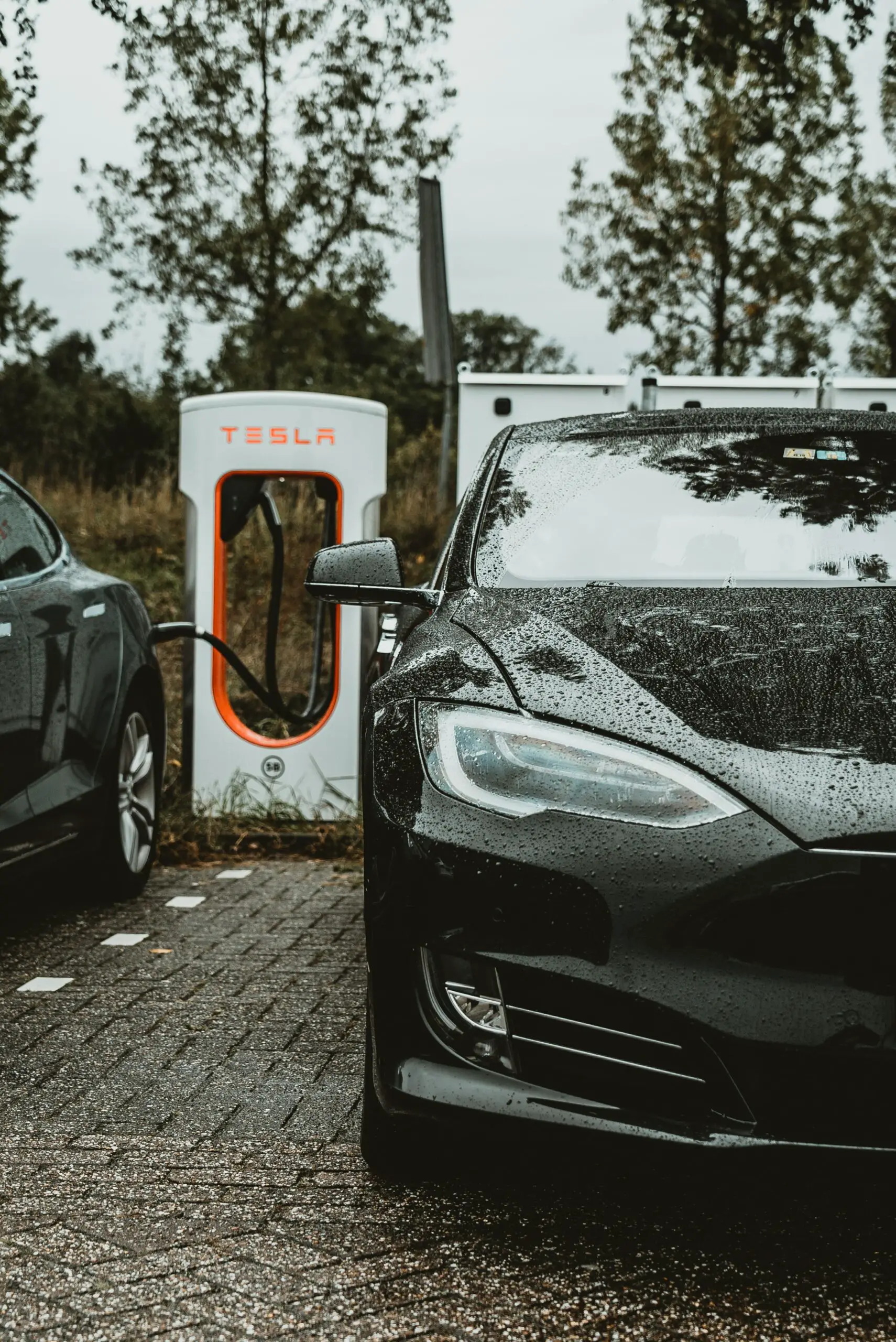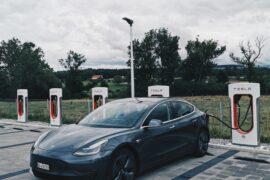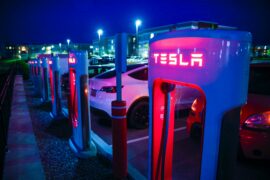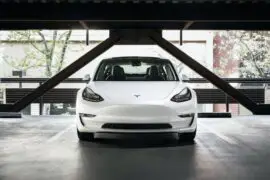Contents
What does preconditioning battery for fast charging mean.
In the dynamic world of electric vehicles, where innovation propels us toward a sustainable future, the quest for faster and more efficient charging solutions has become a driving force. As the demand for electric vehicles continues to surge, so does the need for robust and swift charging infrastructures. In this rapidly evolving landscape, one concept takes center stage in the pursuit of expeditious charging — preconditioning.
Picture a world where charging your electric vehicle is as seamless as refueling a traditional car. Imagine reducing charging times to a fraction of what they once were. This is where the concept of preconditioning emerges as a crucial element, a technological powerhouse that holds the promise of revolutionizing the electric vehicle charging experience. As we embark on this exploration, we’ll delve into the evolving terrain of electric vehicle charging, casting a spotlight on the increasing demand for efficiency, and introducing preconditioning as the catalyst propelling us toward the era of rapid charging.

The Basics of Electric Vehicle Charging
In the realm of electric vehicles, understanding the fundamental principles of charging is key to unlocking the full potential of these transformative machines. Let’s embark on a journey into the basics of electric vehicle charging, unraveling the intricacies that power our eco-friendly mobility.
Charging Fundamentals:
To grasp the essence of electric vehicle charging, we start with the fundamental principles. Unlike traditional internal combustion engines, electric vehicles rely on stored electrical energy to power their motors. This energy is stored in rechargeable batteries, and the process of replenishing this energy forms the core of EV charging.
Challenges with Traditional Methods:
While the concept of electric vehicle charging is straightforward, the execution has faced challenges, especially with traditional charging methods. Slow charging speeds and limited infrastructure have been barriers to the widespread adoption of electric vehicles. The tethering effect of lengthy charging times has been a common concern among EV users, impacting the overall convenience and practicality of electric mobility.
The Need for Faster Solutions:
As the number of electric vehicles on our roads continues to grow, so does the urgency for faster and more efficient charging solutions. Traditional methods, such as standard home charging or public charging stations, often fall short of meeting the demands of a rapidly expanding electric vehicle market. This creates a pressing need for innovative approaches to reduce charging times and make electric vehicles more appealing to a broader audience.
In this exploration of the basics of electric vehicle charging, we lay the groundwork for understanding the challenges that have fueled the quest for faster solutions. As we navigate through the intricacies of this evolving landscape, the spotlight shifts to the imperative role of preconditioning in shaping the future of rapid charging.
Unpacking Preconditioning: What Does It Entail?
In the realm of electric vehicle optimization, preconditioning emerges as a pivotal process that elevates the efficiency of battery charging to new heights. Let’s delve into the intricacies of this transformative concept, peeling back the layers to understand what preconditioning truly entails.
Defining Preconditioning:
At its core, preconditioning is a sophisticated preparatory phase designed to optimize an electric vehicle’s battery before initiating the charging process. It’s the digital conductor orchestrating a symphony of actions to ensure that when the charging begins, it does so with maximum efficiency.
The Detailed Preconditioning Process:
Unraveling the detailed process of preconditioning unveils a carefully choreographed sequence of actions. This involves more than just a simple “warm-up” before a charging session. The vehicle’s battery management system actively engages, assesses, and adjusts various parameters to create an optimal charging environment.
Temperature plays a starring role in this intricate dance. Depending on environmental conditions, the battery may need to be heated or cooled to bring it into the ideal temperature range for efficient charging. This can involve the use of heating elements or advanced cooling systems, ensuring that the battery starts the charging session in an optimal state.
Emphasizing Temperature Management:
The key player in the optimization process is temperature management. A well-regulated temperature is critical for ensuring that the battery performs at its peak during charging. Preconditioning, by actively managing the temperature, not only enhances charging speed but also contributes significantly to the overall health and longevity of the battery.
As we unravel the layers of preconditioning, it becomes evident that this is not just a routine but a sophisticated interplay of technological measures. By understanding what it truly entails, we gain insight into the meticulous preparations that occur behind the scenes, setting the stage for the rapid charging experience that awaits electric vehicle enthusiasts.
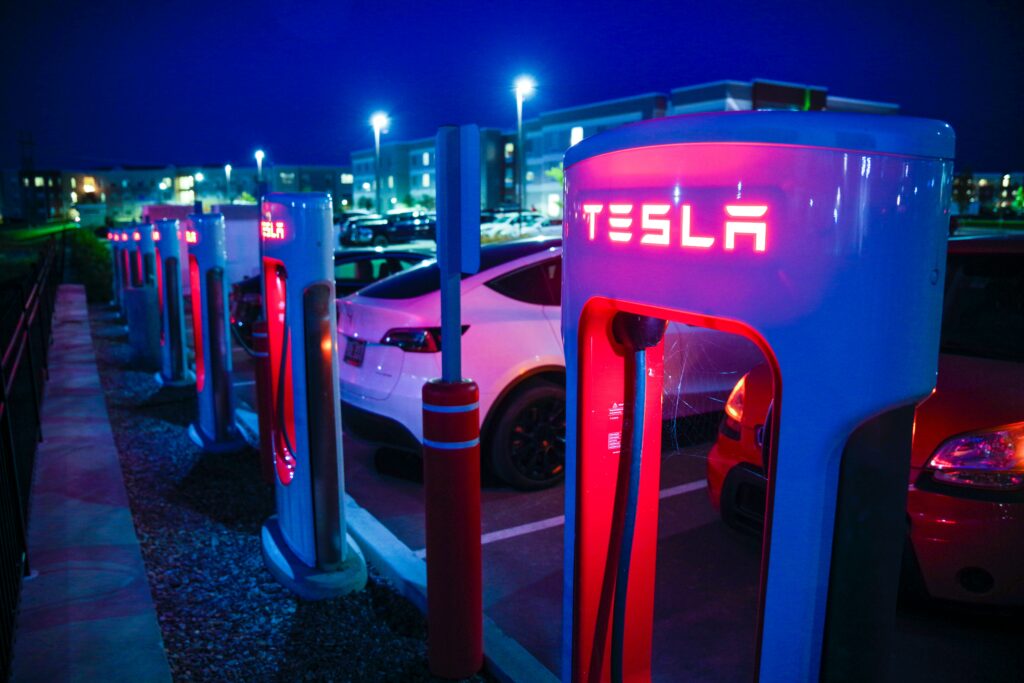
The Impact on Charging Speed and Efficiency
Now that we’ve delved into the intricate workings of preconditioning, let’s explore the tangible impact it has on the charging speed and overall efficiency of electric vehicles. As the curtain rises on this act, we witness how preconditioning becomes the maestro orchestrating an accelerated symphony of charging prowess.
Optimizing Charging Parameters:
The primary mission of preconditioning is to optimize charging parameters, and this optimization extends to multiple facets. Charging voltage and current, crucial elements in the charging equation, are fine-tuned to ensure a harmonious balance between speed and safety. As a result, the charging process is streamlined, allowing the electric vehicle to draw energy from the grid at an accelerated pace.
Enhanced Charging Speed:
The most noticeable impact of preconditioning is the turbocharged charging speed it facilitates. By preparing the battery beforehand, the vehicle sidesteps the sluggish start that often accompanies traditional charging methods. The optimized parameters and ideal temperature create a charging environment where electrons flow seamlessly, significantly reducing the time required to replenish the battery.
Tangible Comparisons:
To truly grasp the transformative nature of preconditioning, let’s draw a tangible comparison. Imagine two scenarios: one where an electric vehicle undergoes preconditioning before charging, and another where it doesn’t. In the preconditioned scenario, the charging session kicks off with the battery primed for optimal performance. The electrons dance to the rhythm of the optimized parameters, resulting in a noticeably faster charging time. On the flip side, without preconditioning, the charging process starts with a colder or warmer battery, leading to a slower and less efficient charging experience.
Consider it as the difference between a sprinter poised at the starting line and one who needs a few seconds to find their stride. Preconditioning eliminates the warm-up lag, ensuring that the charging session is a sprint rather than a marathon.
As we witness the impact of preconditioning on charging speed and efficiency, it becomes evident that this process is not just a convenience but a transformative leap forward in the realm of electric vehicle charging. The real-world implications are profound, reshaping the narrative around electric mobility and catapulting us into an era where rapid charging is not just a possibility but a delightful reality.
Preserving Battery Health: Long-Term Benefits
Beyond the immediate advantages of accelerated charging, the role of preconditioning extends into the realm of preserving the long-term health of electric vehicle batteries. In this segment, we explore the consequential impact of preconditioning on mitigating degradation risks and delve into insights from manufacturers who recognize its significance in ensuring battery longevity.
Mitigating Degradation Risks:
One of the primary challenges electric vehicle batteries face is the natural process of degradation over time. Factors such as charge-discharge cycles, temperature fluctuations, and high charging currents contribute to the wear and tear of battery cells. Preconditioning acts as a guardian against this degradation, offering a shield that mitigates the stresses imposed on the battery during the charging process.
By optimizing temperature and charging parameters, preconditioning minimizes the strain on individual battery cells. This reduction in stress translates into slower rates of capacity loss over time, ensuring that the battery retains its efficiency and performance characteristics for a more extended period.
Manufacturer Insights:
The significance of preconditioning in preserving battery health is underscored by insights from electric vehicle manufacturers. Industry leaders recognize that the careful preparation of the battery before charging is not just about speed; it’s a strategic move to extend the lifespan of the battery pack.
Manufacturers often integrate sophisticated battery management systems into their electric vehicles, and preconditioning is a key feature in this arsenal. These systems actively engage in temperature control and charging parameter optimization, aligning to ensure the longevity of the battery. Insights from manufacturers highlight that the adoption of preconditioning is not merely a trend but a fundamental strategy to address the long-term durability concerns associated with electric vehicle batteries.
As we navigate through the landscape of preserving battery health, preconditioning emerges as a formidable ally. It is not just about the here and now; it’s a forward-looking approach that secures the future reliability and sustainability of electric vehicles, making them a compelling choice for eco-conscious consumers.
In the next segment, we explore the real-world applications of preconditioning and glimpse into the future, where this transformative technology continues to shape the electric mobility experience.

Real-World Applications and Future Developments
As we shift our focus from theory to application, this segment sheds light on the current real-world implementations of preconditioning in electric vehicles. We’ll explore how manufacturers have embraced this technology to enhance the charging experience for users. Additionally, we’ll peer into the future, envisioning emerging trends and advancements in battery technology that are poised to redefine the landscape of preconditioning.
Current Implementations:
Across the automotive industry, major players have recognized the pivotal role of preconditioning and have seamlessly integrated it into the charging routines of their electric vehicles. Models from Tesla, Nissan, and other leading manufacturers employ sophisticated battery management systems that include preconditioning as a standard feature. These systems actively engage in temperature regulation and charging parameter optimization, ensuring that users experience not only rapid charging but also the long-term benefits of preserved battery health.
Through user-friendly interfaces, electric vehicle owners can often schedule preconditioning sessions, allowing the vehicle to prepare its battery ahead of planned charging events. This real-world application is transforming the charging experience, making it more convenient and aligning with the evolving expectations of electric vehicle users.
Exploring Future Developments:
The trajectory of electric vehicle technology is on a constant ascent, and preconditioning is no exception to this upward trend. Emerging developments in battery technology are poised to further refine and augment preconditioning methods, enhancing their efficiency and expanding their scope.
One notable trend on the horizon is the integration of artificial intelligence (AI) into battery management systems. AI algorithms can analyze a multitude of factors, including driving patterns, weather conditions, and user preferences, to predict and initiate preconditioning in the most optimized manner. This not only elevates the user experience but also maximizes energy efficiency, aligning with the broader goals of sustainable electric mobility.
Moreover, advancements in solid-state battery technology hold the promise of revolutionizing preconditioning. Solid-state batteries offer improved energy density and faster charging capabilities. As these batteries become more prevalent, preconditioning methods can leverage their inherent characteristics to achieve even greater efficiencies in charging speed and battery preservation.
As we witness the current applications and peer into the future of preconditioning, it becomes evident that this technology is not static but dynamic, evolving in tandem with the broader advancements in electric vehicle infrastructure. The seamless integration of preconditioning into the fabric of electric mobility cements its status as a cornerstone technology shaping the future of transportation.
In the concluding segment, we bring together the threads of our exploration, summarizing the transformative impact of preconditioning on electric vehicle charging and contemplating its role in the continued evolution of sustainable transportation.
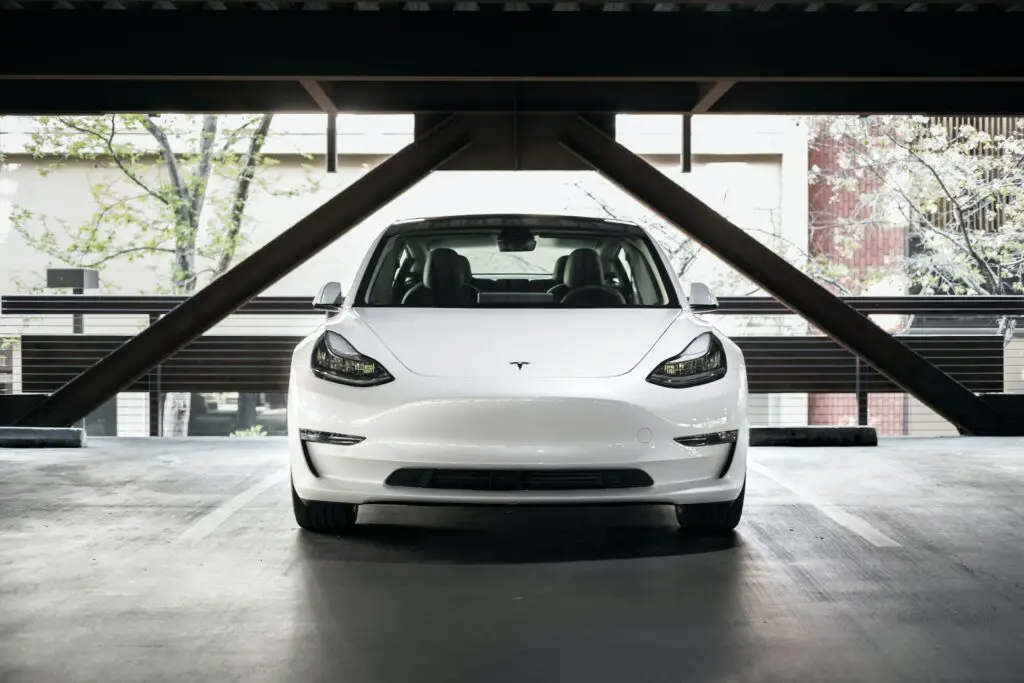
Conclusion
As we bring our exploration to a close, the story of preconditioning unfolds as a narrative woven with technological finesse, charging efficiency, and the promise of a sustainable future for electric vehicles. Let’s gather the threads of insight we’ve unraveled and reflect on the pivotal role of preconditioning in shaping the landscape of fast charging and sustainable transportation.
Our journey began with a glimpse into the evolving landscape of electric vehicle charging, where the demand for faster and more efficient solutions echoed through the corridors of innovation. Introducing preconditioning as the linchpin in this pursuit, we journeyed through its definition, detailed processes, and the transformative impact it wields on charging speed and efficiency.
The spotlight then turned towards the long-term benefits, as we explored how preconditioning acts as a guardian, mitigating degradation risks and contributing to the extended health of electric vehicle batteries. Insights from manufacturers underscored the strategic significance of this process in ensuring the durability and reliability of batteries over time.
Emphasizing the Pivotal Role:
In the realm of fast charging for electric vehicles, preconditioning emerges as a linchpin technology that not only accelerates charging speed but also charts a course toward sustainable and enduring mobility. By optimizing temperature, and charging parameters, and preserving battery health, preconditioning transcends convenience to become a foundational element in the electric vehicle charging experience.
Reflections on Broader Implications:
As we reflect on the broader implications of preconditioning, it becomes clear that its impact extends beyond individual charging sessions. This technology, seamlessly integrated into the charging routines of electric vehicles, becomes a cornerstone in the larger edifice of sustainable transportation. It aligns with the aspirations of a future where electric mobility is not just efficient but also environmentally conscious and economically viable.
The real-world applications of preconditioning in various electric vehicle models showcase its adaptability and practicality. Looking to the future, the integration of AI and advancements in battery technology signals an exciting era where preconditioning evolves to meet the evolving demands of electric vehicle users.
The Future of Sustainable Transportation:
In conclusion, preconditioning stands as a herald of a future where sustainable transportation is not merely a vision but a tangible reality. Its impact on fast charging accelerates the transition to electric mobility, offering a glimpse into a world where the convenience of rapid charging coexists harmoniously with the preservation of our planet’s resources.
As we bid farewell to this exploration, we carry with us the understanding that preconditioning is not just a technological feature; it is a catalyst propelling us toward a future where electric vehicles seamlessly integrate into our lives, redefining the way we move and reshaping the narrative of sustainable transportation. The journey continues, and preconditioning is at the forefront, guiding us towards a greener, faster, and more sustainable tomorrow.

